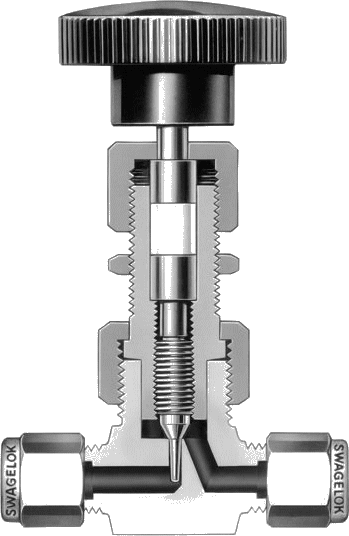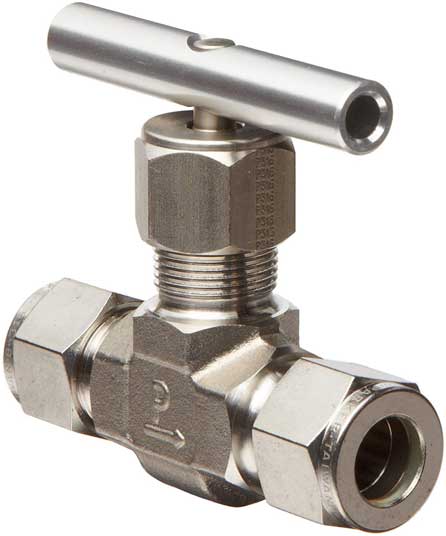Needle valves Introduction
Needle valves Introduction:- The feature of a needle valve is that the long, tapered, looking like a needle sharp on the tip of the valve stem. This NEEDLE acts as a disk. The bigger area of the needle is smaller than the orifice within the valve seat and passes through the orifice before the needle seats. This arrangement permits a really gradual increase or decrease within the size of the opening gap. Needle valves are typically used as element components of different, a lot of difficult valves. as an example, they’re utilized in some kinds of reducing valves.

Needle Valve Applications
Most constant pressure pump governors have needle valves to reduce the consequences of fluctuations in pump discharge pressure. Needle valves also are employed in some parts of automatic combustion management systems wherever terribly precise flow regulation is critical.
Needle Valve Body styles
One kind of body design for a needle valve is that the bar stock body. Valve bodies are common, and, in globe types, a ball swiveling within the stem provides the mandatory rotation for seating while not damage.

Needle valves are used as metering valves. Metering valves are used for constant and very fine flow control. The skinny disk or orifice permits for linear flow characteristics. Therefore, the total number of hand wheel thread is directly proportional to the amount of flow. A typical metering valve features a stem with forty threads per inch.
Needle valves typically use one in every of 2 types of stem packing: an O-ring with TFE backing rings or a TFE packing cylinder. Needle valves are usually equipped with replaceable seats for easy maintenance.
Needle valves size is smaller than normal valve & price range is also low so that easy to replace instead of repair. This valve commonly utilized in instrument isolation and very small amount of fluid flow.
Reference:- wermac






























